
Ellicott City is an unincorporated community and census-designated place in, and the county seat of, Howard County, Maryland, United States. Part of the Baltimore metropolitan area, its population was 75,947 at the 2020 census, making it the most populous unincorporated county seat in the country.
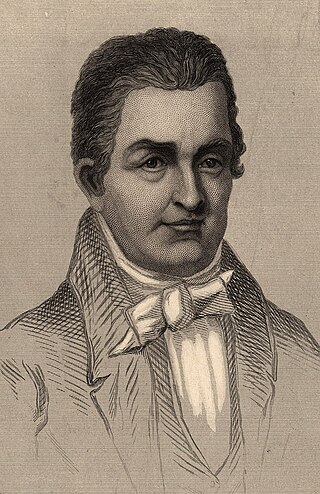
Oliver Evans was an American inventor, engineer, and businessman born in rural Delaware and later rooted commercially in Philadelphia. He was one of the first Americans to build steam engines and an advocate of high-pressure steam. A pioneer in the fields of automation, materials handling and steam power, Evans was one of the most prolific and influential inventors in the early years of the United States. He left behind a long series of accomplishments, most notably designing and building the first fully automated industrial process, the first high-pressure steam engine, first vapor compression refrigeration and the first amphibious vehicle and American automobile.

Dredging is the excavation of material from a water environment. Possible reasons for dredging include improving existing water features; reshaping land and water features to alter drainage, navigability, and commercial use; constructing dams, dikes, and other controls for streams and shorelines; and recovering valuable mineral deposits or marine life having commercial value. In all but a few situations the excavation is undertaken by a specialist floating plant, known as a dredger.

The Desjardins Canal, named after its promoter Pierre Desjardins, was a canal in Ontario, Canada. It was built to give the town of Dundas easier access to Lake Ontario and the Great Lakes system of North America. Although a technological achievement and a short term commercial success, the canal was soon eclipsed by the railway, and Dundas by neighbouring Hamilton.
Andrew Ellicott was one of three Quaker brothers from Bucks County, Province of Pennsylvania who chose the wilderness up river from Elk Ridge Landing to establish a flour mill. John, Andrew, and Joseph Ellicott founded Ellicott's Mills which became one of the largest milling and manufacturing towns in the East.

The Port of Boston is a major seaport located in Boston Harbor and adjacent to the City of Boston. It is the largest port in Massachusetts and one of the principal ports on the East Coast of the United States.

The Helen Delich Bentley Port of Baltimore is a shipping port along the tidal basins of the three branches of the Patapsco River in Baltimore, Maryland, on the upper northwest shore of the Chesapeake Bay. It is the nation's largest port facility for specialized cargo and passenger facilities. It is operated by the Maryland Port Administration (MPA), a unit of the Maryland Department of Transportation.

The Baltimore and Ohio Ellicott City Station Museum in Ellicott City, Maryland, is the oldest remaining passenger railway station in the United States, and one of the oldest in the world. It was built in 1830 as the terminus of the Baltimore and Ohio Railroad line from Baltimore to the town then called Ellicott's Mills, and a facility to service steam locomotives at the end of the 13-mile (21 km) run. The station, a National Historic Landmark, is now used as a museum.
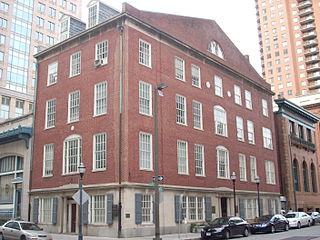
Canton House is a historic office building located on the northeast corner of Water Street and South Street in Baltimore, Maryland, United States. It is a 4+1⁄2-story Colonial Revival-style building, with seven bays across the front façade of Water Street to the south and three bays across the side facing South Street to the west. The first story level is in marble and brick is laid in Flemish bond from the second story up. It has a sloped peaked roof with two dormer windows facing west to the side. The main entrance features two fluted Corinthian stone columns.
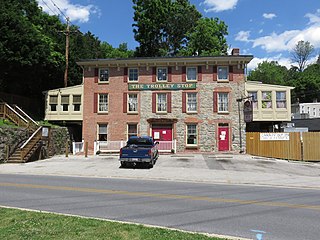
Ellicott's Mills Historic District is a national historic district at Oella, Baltimore County, Maryland, United States. It is on the east bank of the Patapsco River, opposite Ellicott City. This historic district designation relates to the industrial operations of the Ellicott family from the 1770s through the mid-19th century. It consists of the sites of historic buildings including: an 18th-century building, a section of an 18th-century mill incorporated in a 20th-century factory, a 19th-century tavern, 19th-century workers housing, and an 1859 Italianate villa built by John Ellicott. Historically, these industrious mills were served by the major east–west route in Maryland during the early 19th century, the old National Pike. Also in the district is the mammoth multi-story Wilkins-Rogers Company flour plant, which is located on the site of the 1792 Ellicott Flour Mill, the first merchant flour mill in the United States.
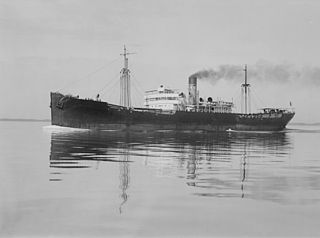
SS West Elcajon was a steel-hulled cargo ship built in 1918 for the United States Shipping Board's World War I emergency wartime shipbuilding program.
John Ellicott was one of three Quaker brothers from Bucks County, Pennsylvania who chose the picturesque wilderness up river from Elk Ridge Landing to establish a flour mill. John and Andrew Ellicott moved to Baltimore County, Maryland in May 1771 purchasing 50 acres of Baltimore County land from Emanuel Teal and 35 acres from William Williams. John, Andrew, and Joseph Ellicott founded Ellicott's Mills which became one of the largest milling and manufacturing towns in the East.
The Orange Grove Flour Mill was a flour mill established in 1856. It was one of the leading flour mills in the Mid-Atlantic states until it was destroyed in a fire in 1905.

Martha Ellicott Tyson was an Elder of the Quaker Meeting in Baltimore, an anti-slavery and women's rights advocate, historian, and a co-founder of Swarthmore College. She was married to Nathan Tyson, a merchant whose father was the emancipator and abolitionist Elisha Tyson. She was the great-great grandmother of Maryland state senator James A. Clark Jr. (1918–2006). She was inducted into the Maryland Women's Hall of Fame in 1988.

George Ellicott House is a historic house located in Oella in Baltimore County, Maryland, United States.
George Ellicott (1760–1832) was a son of Andrew Ellicott, who with his two brothers founded Ellicott's Mills, Maryland. He was a mathematician, an amateur astronomer, a younger cousin of surveyor Major Andrew Ellicott and a friend of Benjamin Banneker. He was the father of Martha Ellicott Tyson, who became an Elder of the Quaker Meeting in Baltimore, an anti-slavery and women's rights advocate, the author of a biography of Benjamin Banneker, a founder of Swarthmore College and an inductee to the Maryland Women's Hall of Fame.

Cokesit was a steam cargo ship built in 1918–1919 by Guy M. Standifer Construction Company of Vancouver for the United States Shipping Board as part of the wartime shipbuilding program of the Emergency Fleet Corporation (EFC) to restore the nation's Merchant Marine. The vessel was largely employed on the East Coast of the United States to Australia route until 1928 when she was laid up. In late 1937 the ship together with several other vessels was bid on and subsequently acquired next year by the Greek tramp operator John D. Chandris to carry cargo from Australia to Greece and United Kingdom. The freighter was also renamed Adelfoi Chandris. Following the surrender of France, the ship was interned in Dakar and passed into Vichy government hands in 1940 and renamed Saint Marin. Under the terms of Nevers Agreement she eventually was transferred to Italy and renamed Catania. In early August 1943 the vessel together with several other ships was bombed and damaged in Naples harbor by the Allied aircraft.
Olockson was a steam cargo ship built in 1918–1919 by Guy M. Standifer Construction Company of Vancouver for the United States Shipping Board as part of the wartime shipbuilding program of the Emergency Fleet Corporation (EFC) to restore the nation's Merchant Marine. In March 1920, only on her second voyage, the vessel caught fire and had to be abandoned by the crew. The ship was subsequently towed to Baltimore where she was broken up in 1924.
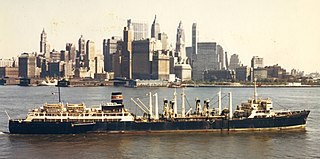
USAVEssayons was a hopper dredge of the United States Army Corps of Engineers. At the time of her construction, she was the largest hopper dredge ever built. She was the flagship of the Army Corps of Engineers dredge fleet. Her primary mission was to maintain the entrance to New York Harbor and other East Coast ports, but she was employed all around the United States and at several international locations. She was launched in 1949 and retired in 1980.













